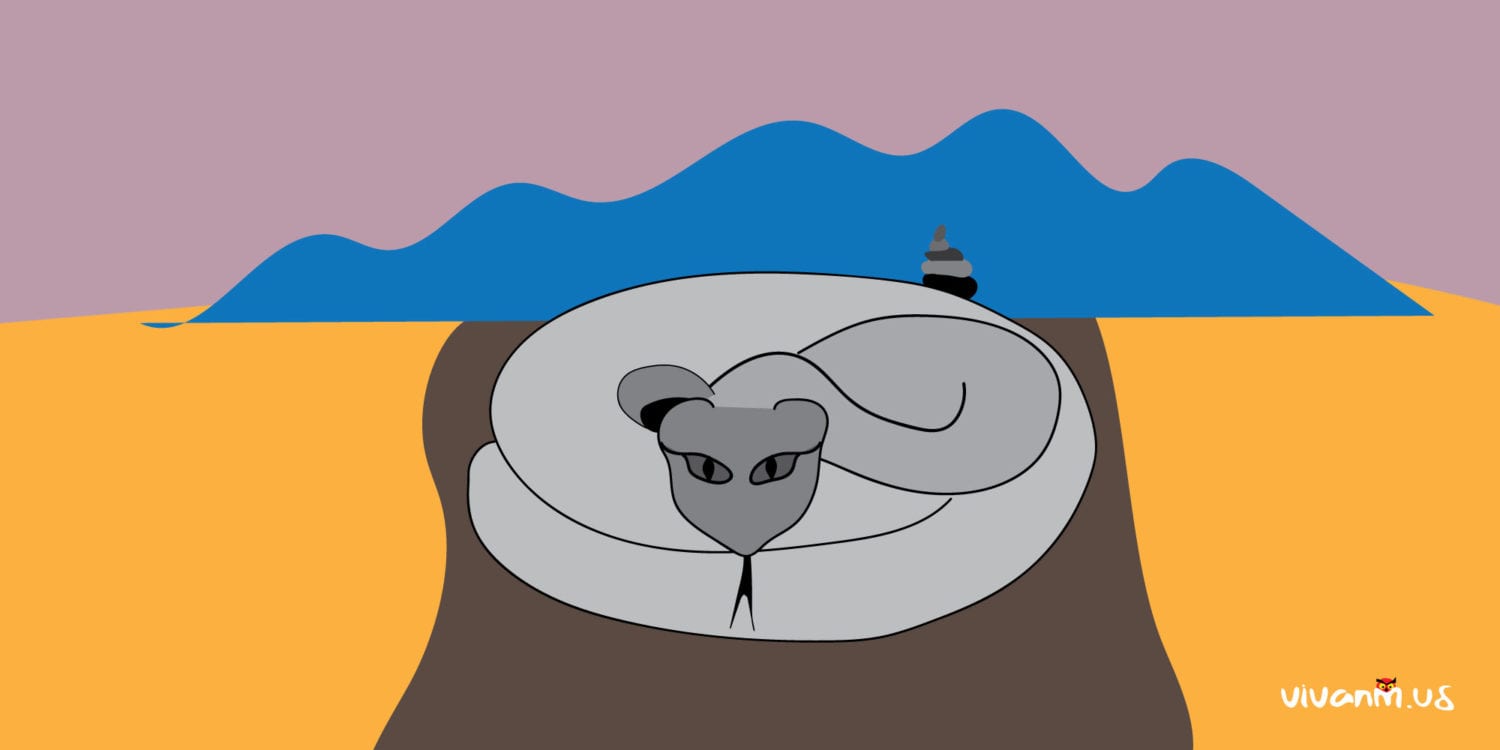
11 Jun Snakes in Southern New Mexico
“I’d go on an adventure with you, but I’m worried about snakes”
There is no reason to let snakes ruin your experience in the New Mexican Outdoors. They’re just another part of our public lands that we can all appreciate… from a distance.
Here are some dos and don’ts to think about before you head out on the trail.
DON’T: PANIC
A snake will not strike you unless it feels threatened. Respect their space and they will not harm you. Be smart about approaching a snake, educate yourself on the various snakes found in NM, and don’t disturb snakes you encounter. Like most animals, snakes will not harm you unless they feel threatened so give them space and you’ll be fine.
DO: KNOW WHAT VENOMOUS SNAKES LOOK LIKE
Various species of rattlers are found throughout New Mexico
Coral snakes are found in the boot heel/Southwest corner of the state
DO: STAY ON THE TRAIL
During snake season, stay on trails and clear paths where snakes can’t hide and can easily be seen if you would encounter one.
DO: KEEP KIDS/PETS ON TRAIL AND CLOSE BY
No matter how much direction we give our kids and pets they get curious and like to wonder to self-explore. While the outdoors may be an amazing place to roam and experience new things it’s important to remember the dangers as well. Keeping your kids close and your pets leashed is the best way to keep them safe and reduce the chance they would stumble across a snake. Stay on the trail and stay safe.
DO: WEAR STURDY BOOTS AND CONSIDER BRINGING TREKKING POLES
When hiking throughout New Mexico we encourage you to wear boots. Boots provide a layer of protection in the event you step on a snake resulting in it striking you. Taking along trekking poles or a walking stick is helpful for checking for snakes prior to stepping over downed logs and boulders.
DON’T: APPROACH SNAKES
As you’re walking on the trail snakes can feel the vibration from your steps and will likely move out of your way prior to encountering them. If you encounter a snake on the trail do not approach it. Give the snake some time to move on its own. If a snake does not move along look for an alternate route around the snake but do not venture far off the trail. Do not try to scare snakes off the trail; you will only encourage them to strike. Leave snakes alone and they will do the same.
DON’T: TREAT SNAKE BITES
Although it’s unlikely to be bitten by a snake, do not attempt to render aid to yourself. There are many myths about treating snake bites from suck the poison out to applying a tourniquet. This can make things worse. The best treatment you can provide yourself is to REMAIN CALM and call 911. Remaining calm will keep your heart rate down which will reduce the rate venom is pumped through your body. Avoid overexerting yourself and seek medical treatment as soon as possible.
We encourage you to download SnakeBite911. The SnakeBite911 App Suite provides access to useful information, from snake safety and basic pit viper bite first aid, to bite management and treatment in the ER.
Lastly….
DON’T: LET SNAKES KEEP YOU FROM EXPLORING NEW MEXICO
Most importantly, don’t let the thought of encountering snakes keep you from enjoying the outdoors. Remember snakes don’t want to hurt you, they want to avoid you as much as you want to avoid them. Keep your kids and pets close to you, stay on the tails and enjoy the beauty New Mexico has to offer.
New Mexico is home to 8 different poisonous snakes with the rattlesnake being the most common (7 species). Rattlesnakes can be identified by the rattle on the end of their tail as well as its diamond-shaped head. Young rattlers do not have a rattle but are equally poisonous. In addition to the various rattlesnake species, New Mexico is home to the poisonous coral snake. The coral snake can be easily identified by its black, yellow and red bands that alternate throughout the length of the snake.
New Mexico is also home to other snake species who attempt to replicate poisonous snakes as a way of detouring predators. If you encounter a snake, leave it alone, find another path and do not disturb it.




Comments